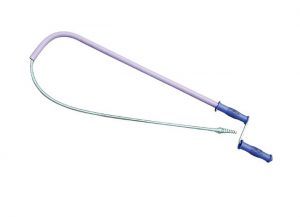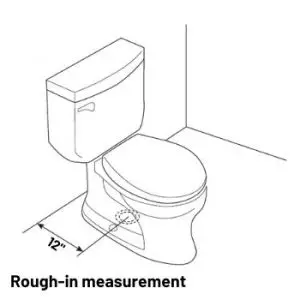If you want to acquire expertise in the toilet and sanitary industry, then, first of all, you need to have a vast and precise knowledge of the glossaries of toilets. Let us have an extended discussion on the toilet terms.
Toilet Parts Names (Diagram):

Toilet terminology: 56 toilet terms and parts names
ADA
The full form of ADA is the “Americans with Disabilities Act.” The then authority of America enacted this act. The ADA denotes equal rights and opportunity for the disabled and people who are not fully workable. In the toilet sector, ADA-compliant toilets are given more preference when buying a toilet because they strictly maintain the toilet requirements, making it easy for persons with disabilities to use the toilet.
Auger
It is a flexible rod with a curved end to pull clogs from a toilet trap. It is a tremendous product that can break the toilets’ clogs and remove all the blocked waste.
The working mechanism: It works in a distinctive manner that is worked by rotating the cable, so it moves into the drain opening by a screwing action. It works efficiently by clearing the toilet through to the drain pipe behind or under it. This gadget has a sharp spiral and semi-rigid wire that is flexible to bend in the trapways. It can remove the blocked clogs by reaching them and hitting them with the wire.
Ballcock
A ballcock is a special device that is designed to enable the filling of water tanks without overflow. The ballcock is an inevitable item in terms of a toilet.
The working mechanism: A flapper at the tank’s base opens when a toilet is flushed, allowing water to flood the toilet bowl. When the water level in the tank plummets, the ball attached to the ballcock assembly triggers the lever and allows the water inflow to flow into the tank.
Location: The ballcock has a floating ball attached to a lever. The lever, in turn, is attached to a valve that connects to the water inflow. In a toilet, a ballcock is attached to a long tube, and it is known as the fill valve.
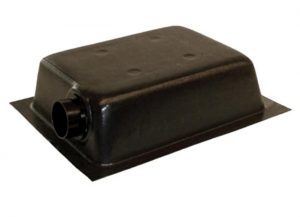 Black water tank
Black water tank
It is mainly seen in the RV toilets. An RV is a dynamic vehicle that moves around from one place to another. There is no fixed septic tank, so it needs to have a separate method for storing the waste.
Where is it located?
It is mainly located under the RV toilet, so that waste can directly be disposed of in the Black water tank. Waste is stored in the Black water tank for some days, and after some weeks, it is dumped at a safe place.
 Bidet
Bidet
A bidet is a supporting element used after you use the toilet to clean yourself instead of toilet paper. It is gaining more popularity in the middle east and Europe for its personal space and serenity. It has a washing basin, faucet, and sprayer.
Purpose of the bidet: The bidet incorporates a fresh stream of water to cleanse you after using the restroom. It is a decent substitute for toilet paper and the best way to keep yourself cleaner and more hygienic.
 Bowl of the toilet
Bowl of the toilet
The toilet bowl is a round or elongated-shaped basin-like structure where you leave the waste while using the toilet. Water comes out from the tank and flushes within the vicinity of the bowl.
Where is it located?
Bowl is located at the bottom portion of the toilet tank, and they are interconnected as water passes through the tank into the bowl when you flush the toilet. Toilet seats and the cover have been placed on the toilet bowl for maximum protection from germs and for sheer convenience.
Comfort toilet
The Comfort height toilet is something that distinguishes the traditional toilet from a brand new invention of the modern toilet. The comfort height toilets are dissimilar from the traditional toilets in terms of height; these toilets are 17 to 19 inches tall from the ground floor, whereas the normal toilets are about 15 inches tall from the ground. These toilets meet the requirements of the ADA, so it is a perfect product for the disabled and older persons.
 Concealed trapways
Concealed trapways
It is a popular type of trapways. Concealed trapway refers to toilets that do not have visible bends and curves like pipelines at the backside of the toilet. Rather, it has a hidden trapway that is very simple to clean.
Location: Concealed trapways are located at the backside of the toilet bowl, and it has a very simple and aesthetic design that can suit any bathroom ambiance.
Mechanism: After leaving the waste in the toilet, we flush, and a flow of waste carries that waste through the Concealed trapways heading towards the septic tank.
Cistern
A toilet mostly has two bigger parts: a toilet bowl and a cistern. It is traditionally referred to as the tank of the toilet.
How does it work?
The cistern passes water through to the toilet bowl by gravity or air pressure. Once the toilet flushes, the float mechanism inside the cistern lowers. This tells the fill valve that water needs to be added to the tank. Typically a lever or a button is what typically activates the mechanism.
Where is it located?
The toilet’s cistern is located in the upper section of the toilet, which is responsible for managing and storing the water supply during a flush.
 Chain of the toilet
Chain of the toilet
The chain is one of the most crucial items for initiating the perfect flushing of the toilet. It is a steel chain attached to the trip lever and used as a lever for uplifting the plastic flapper.
Where is it located?
The chain of the toilet is located in the tank of the toilet. It is connected with the arm or the trip lever, and the other side is connected with a plastic flapper. Combinedly all the parts work as a unit to make a successful flush.
How does it work?
When we press the handle of the toilet, it shakes the trip lever, and the trip lever passes the energy to the chain, and eventually, the chain uplifts the plastic flapper, making room for passing our water into the toilet bowl from the tank. The chain creates the link between the lever arm and the flapper.
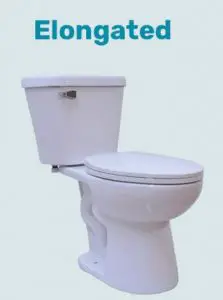 Elongated Toilet
Elongated Toilet
It is mainly a version of a toilet that gives you more comfort and more room for using the toilet. Elongated toilets are mostly regarded as more comfortable and compatible for men and older people because it has 2 inches more room for using the toilet. It is the best shape of the bowl you may ever get.
EPA
The full form of the EPA is the “Environmental protection agency.” This term is used for those toilets that use less water than conventional toilets. EPA helps to identify high-performance, water-efficient toilets that can reduce water use. Those toilets that meet the EPA requirement are considered the industry’s top dogs.
Flush valve
The water supply originated behind the wall where all the plumbing fixtures exist. The tank ball or floating weight immensely triggers the trip lever when you push the flush button. When you flush the toilet, the handle upholds a chain, which clears the flush valve. Water drains through the proper channel valve into the bowl. The flapper remains open until the tank fully drains out all the water and then closes on its own.
Location: This valve inside the tank will push water through the bowl to remove the waste. Most toilets have a lever or push button activator used to control the flush valve.
Flapper
 The flapper is the plastic element that pioneers the path for passing water into the bowl from the tank.
The flapper is the plastic element that pioneers the path for passing water into the bowl from the tank.
Location: The flapper is located at the bottom portion of the tank, slightly above the gasket valve of the tank. The flapper is triggered when the chain makes it soar up.
How does it work?
You push the flush button, which gives momentum to the trip lever. When the trip lever is triggered, it agitates the chain of the toilet, and the chain instigates the flapper to open and allow water to move towards the bowl.
 Float ball
Float ball
The float ball is the regulatory system that measures the water level in the tank. If the float ball is kept upside it stops the flow of water in the tank, and when it plummets, it allows water to fill the tank.
Where is it located?
It is connected vertically by a rigorous metal rod to the ending portion of the flush lever or horizontally to the tip of the fill valve.
Flange
 A flange is the main protruding wheel-shaped equipment that is buckled to another end of an object to make it more inclusive and interactive.
A flange is the main protruding wheel-shaped equipment that is buckled to another end of an object to make it more inclusive and interactive.
Location: The flange is the bottom part of the toilet that is located underneath the toilet. This is the exit from where the waste is passed through the channel or the pipeline and goes directly to the septic tank.
How does it work?
It is the connecting piece between the plumbing drainage and your toilet. It mainly passes through the waste to the drainage pipe from the toilet, and it also works as a stabilizer to keep it held in place tightly and to avoid rocking or tilting.
GPF
The full form of the GPF is the “gallon per flush.” It is used to measure water consumption while you press the flush button.
What does it mean?
The GPF is a standard measurement for calculating how much water a toilet consumes in every flush. The GPF is very much crucial for every toilet. If the GPF of a toilet is too high, then that likely might increase your water bill.
GPM
The full form of the GPF is the “gallon per minute.” It is not that much used in measuring water consumption per flush. It is a much bigger unit mainly used in more extensive places like in commercial and industrial scenarios.
Gray water
Gray water is dirty water coming from bathtubs, bathroom sinks, kitchen chambers, and basins. In a combined manner, it is mainly household wastewater. Gray water does not contain harmful elements like human feces or urine, or such kind substances.
Handle
 The toilet handle is the prime component of the toiler that triggers the flushing of water out of the tank.
The toilet handle is the prime component of the toiler that triggers the flushing of water out of the tank.
Location and purpose: It is located at the exterior portion of the tank of toilet. In some cases, there are flushing buttons instead of the toilet handle.
When you push the handle of the toilet, then it agitates the trip lever and the chain, and as a result, the flapper is opened and sends water into the bowl from the toilet’s tank.
HET
The full meaning of HET is “High-efficiency Toilets.” The high-efficiency toilet design and operation principles reflect the shift from removing waste by using flush water volume to increasing flush water velocity to remove waste.
 Heated seats
Heated seats
A heating element inside the toilet seat keeps the seat warm even in the winter. Some models even have an automatic chamber for producing immense warmth.
MaP test
MaP test denotes the quantity of waste that can be flushed through a toilet. Normally the Map score is attenuated between zero to thousand grams of waste and other solid waste elements.
 One-piece (toilet)
One-piece (toilet)
A one-piece toilet is much more advanced and developed than ordinary two-piece toilets because the tank and bowl work as a unit and come in a one-piece design. It looks more trendy and sleek in design and is simpler to maintain.
 Overflow tube
Overflow tube
The prime objective of the overflow tube is to prevent overflooding in the tank and maintain the right water level in the tank. It mainly works as a substitute for the overflow ball. When the ball is out of order, the overflow tube makes sure that waste does not overflow into the tank, so it introduces a path that allows water to run into the water bowl.
Location: It is firmly located within the toilet tank and just beside the refill tube.
 Plunger
Plunger
The plunger is a device that removes all the blocked waste and acute clogs from the drainpipe of the toilet.
How does it work?
The beehive plunger has been pushed into the trapways, and the vacuum seal that it creates mainly helps plunge the toilet. Moving it back and forth can break the waste block and remove those throughout the drainpipe.
Push button
It is actually called the “Flush button” of the toilet. It is mainly the part that initiates the main flushing mechanism.
Where is it located?
It is primarily located in the middle of the lid of the toilet’s tank. There are two types of push buttons, one is the single push button, and the other is the dual push button. In some cases, the push button is seen at the side of the tank.
How does it work?
When you press the push button, the process of flushing is begun. Pressing the push button triggers the trip lever, chain, and flapper, and that’s how water passes through the bowl of the tank.
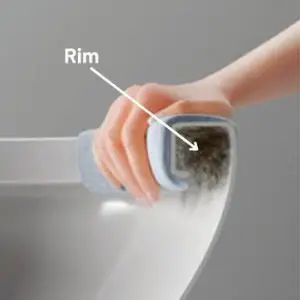 Rim
Rim
The rim of the toilet is nothing but the borderline or territory of the toilet bowl. It can also be termed as the inside edge of the perimeter of a toilet bowl. There is a rimmed and rimless toilet available in the market.
 Rounded toilet
Rounded toilet
If the bowl and toilet seat’s shape seems rounded, it is called the rounded toilet. It is mainly 2 inches shorter than its counterpart elongated toilet and is more suitable for classic toilets.
Rough-in measurement
The Rough-in measurement is the distance between the backside wall and the pipe outlet’s center. There are 10, 12, and 14 inches Rough-in available on the market. You can use a measuring tape to calculate the Rough-in.
Refill tube
It is situated in the toilet tank and the overflow tube. These two are closely related to each other.
 How does it work?
How does it work?
The refill tube governs the overflow tube and how much water is to be filled in the tank. The refill tube shows direction upwards from the fill valve, draining directly into the flapper and disseminating the clean water into the bowl.
 Soft closing toilet seat
Soft closing toilet seat
Among the colossal features of the new generation of toilets, one of the most enticing features is the Soft closing toilet seat. It uses a comprehensive spring module that enables the seat to close quickly and automatically.
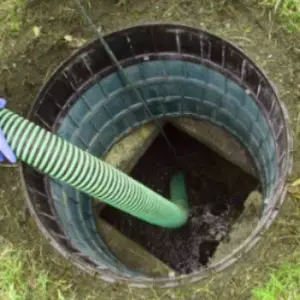 Septic Tank
Septic Tank
The Septic tank is the ultimate destination where all the waste goes, falls, and is stored for a long time. We use the toilet, and waste flows through the pipe and is finally dumped in the septic tank located outside the home in a fixed place.
 Stop valve
Stop valve
The stop or shutoff valve is located to the bottom left of the toilet. A water supply hose is connected with this piece that is attached to the lower portion of the toilet.
Working mechanism
Rotating the stop valve can turn off the water supply line. The stop valve works as the screwing element to regulate the water supply into the system.
Snake
Snake is synonymous with the toilet auger and is used to unclog the toilet. The cable is entered into the trapways and is pushed and pulled several times. The spiral steel cable breaks the sludge lump, and finally, flushing the toilet can eradicate all the waste.
Skirt trapway
The skirt trapway contains a clean line from front to back of the toilet. Its smooth backside makes it easier to clean the toilet’s surface.
Trapway
Trapway is the hole located at the bottom of the toilet bowl from where waste has flowed away through the drainpipe heading towards the septic tank.
Trip lever
Location: The trip lever is located within the tank, and it is attached to the handle of the toilet. The other end holds a steel chain that is also attached to the plastic flapper.
Working mechanism
When you press the handle, the trip lever is triggered and uplifts the chain. As a result, the flapper opens and enables all the water into the toilet bowl.
Two-piece toilet
It is a type of toilet where the tank and bowl of the toilet are sold separately, and later, they are installed as a single toilet.
Trap seal
The seal that is produced by water in a trap impedes septic gasses from leaking back into the home. The trap seal is calculated from the trap’s inlet to the top of the dam.
 Toilet tank
Toilet tank
The tank is the piece where water is refilled and stored for the further flushing mechanism. This unit is literally linked with the bowl of the toilet.
Tank bolts
Three bolts hold together the tank, gasket, and toilet bowl. These bolts are covered with bolt caps. They are located at the lower portion of the toilet near the floor. These bolts secure the toilet from shaking and dismantling.
Urinal
It is a plumbing piece used only for urination in a standing position. It is much more common in public places, and both males and females can use unisex urinals.
ULF
The Low Consumption or ULF (Ultra-Low-Flow) toilets are modern types of toilets that use a very low amount of water, like 1.6 gallons or 1.28 gallons per flush.
Vitreous china material
It is a special type of enamel coating applied to ceramic and porcelain materials, making them more dense, durable, and powerful. It consists of clay, kaolin, feldspar, and quartz.
Vent pipe
Location: It is located at the center of the plumbing wall, right next to the closet bend. It is a pipe that exists outside of the house.
Working mechanism
The prime objective of the vent pipe is to remove all the toxic gasses and foul odor from the toilet. It is connected with the toilet’s drainage system; toxic gasses passing through the drainage line are thrown away outside the bathroom, reducing the effect of bad odor.
Watersense technology
Watersense technology is a rampant colossal technology that enables the toilets to use less water in every flush, more precisely, less than 1.28 GPF of water.
Waste outlet
It is the definitive whole that passes through water and solid waste. The waste outlet is mainly located 12 inches further from the backside of the toilet from the wall. It is the place where the flange and wax seal is installed.
Water closet
A water closet is nothing but the toilet itself. Some builders also consider the water closet with a bathroom with only a toilet.
 Wall-mounted toilet
Wall-mounted toilet
The wall-mounted toilet is an exclusive edition to the toilet arena, where the toilet is hung with the wall. It is a more compact and attacking version of the toilet that is mainly witnessed in more advanced bathrooms. All the plumbing fixtures are concealed behind the wall here.
 Wax seal
Wax seal
Location: It is located at the bottom section of the toilet, which is linked with the rubber gasket and flange that holds its position at the entry point of the drainage pipe.
Working mechanism: We use the wax seal with the rubber flange so that harmful gasses from the sewer cannot contaminate the ambiance of the toilet and prevent water from leaking from the toilet.
We are really lucky to have a hard-working, multi-skilled plumber on our team. Collin D. Gallegos, a professional plumber who has worked with us since 2012, is an expert in vent, septic, and drainage systems. He is a Certified Master Plumber and has worked on various commercial plumbing projects. He usually helps our readers resolve plumbing and pipe-related issues with a proper DIY troubleshooting and repair guide.
